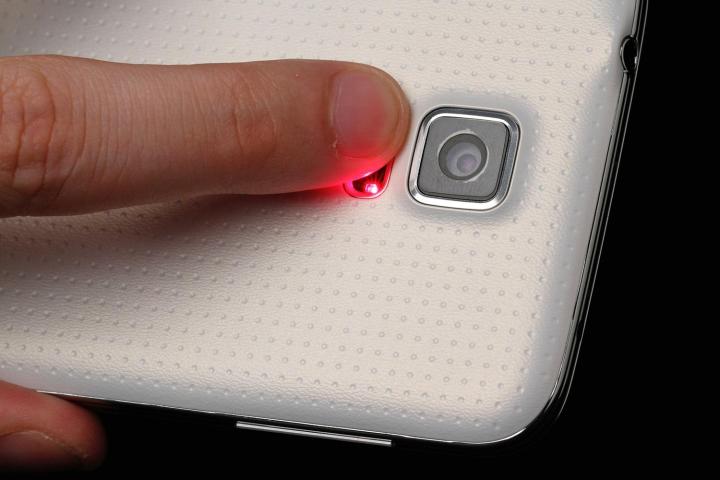“We think blood pressure monitoring will change more in the next five years than it has in the last one hundred years,” Ryan Kraudel, Vice President of Marketing at biometric sensor maker Valencell, said as we talked about the company’s innovation in blood pressure monitoring over Zoom for CES 2022.
Such a bold statement could often be glossed over as hyperbole, but the thing is, after hearing what Valencell is working on, his prediction doesn’t sound farfetched at all. Its cuff-less, calibration-free blood pressure monitor could make taking your blood pressure as simple as measuring your heart rate is with a smartwatch today.
What is Valencell working on?
When you want to measure blood pressure, you use either one of those familiar cuffs or a slightly higher-tech cuff-less product to do so. Both are clearly medical devices, though, they are rarely particularly portable and certainly not friendly to use in that they’re noisy and somewhat intrusive. The cuff-less versions are better, but still regularly need to be paired with a cuffed version to make sure they remain accurate. Valencell’s innovative new technology is very different.

“Cuff-less blood pressure devices need regular calibration using a cuff to ensure they are working correctly, and have to be regulated by the Food and Drug Authority (FDA),” Kraudel said. “The innovation with our technology is there is no calibration required, ever. We need a person’s age, height, weight, and gender, and this, combined with the data from our sensor, allows us to get an accurate blood pressure reading.”
By using its software algorithms and a small sensor, along with the same PPG sensor found on most smartwatches and fitness wearables today, Valencell’s calibration-free approach will make taking your blood pressure as seamless and simple as using the Electrocardiogram (ECG) feature on an Apple Watch today, and crucially, it’ll have the required level of accuracy for it to gain approval from the FDA.

“We have done clinical studies according to the same ISO standards for blood pressure cuffs cleared by the FDA, and we meet them, even though we don’t need calibration,” Kraudel said.
Industry experience
You may not have heard of Valencell, but there’s a good chance you’ve used one of its PPG sensors. It has been in the business for 15 years, and its sensors are found in 70 different devices on sale today from names including Samsung, LG, Sony, Jabra, Bose, and Peloton. Kraudel explained the motivation behind the company’s quest to make blood pressure monitoring easier than it ever has been.
“Everyone knows high blood pressure is bad, but the problem is vast. A billion people have hypertension, a silent killer with no outward symptoms,” Kraudel said. “Nobody likes to use a blood pressure cuff, so people aren’t measuring enough, and even people with diagnosed hypertension are very rarely measuring their blood pressure. The easier you make monitoring it, the more it will help people can manage hypertension, or catch it before it becomes a problem.”

How easy is it? Kraudel demonstrated Valencell’s technology using a small, handheld device with a sensor just a few millimeters square in size embedded in it, connected via Bluetooth to a smartphone. After touching the sensor for 30 seconds, his blood pressure appeared in the app alongside his heart rate. It was no more complex or time-consuming than taking an ECG on the Apple Watch, which involves pressing and holding the Digital Crown for a short time.
How is this possible?
How is taking blood pressure without a cuff or calibration possible? Kraudel let us into the secret:
“We are not directly measuring blood pressure,” he said. “We are estimating blood pressure based off machine learning algorithms that have seen enough data from PPG sensors alongside blood pressure readings, in order to estimate blood pressure across an entire diverse population, including diversity in human physical characteristics, and blood pressure ranges. It’s the same methodology used to measure heart rate, SpO2 blood oxygen, and respiration rate, then it uses our algorithm to measure the blood flow dynamics to estimate blood pressure.”
How accurate is this estimation? Crucially, the results Valencell is seeing meet the standards required by the FDA for all its cuff-less blood pressure monitors.
“We have tested it on more than 7000 human subjects, gathering 25,000 data sets, using Artificial Intelligence (A.I.) and machine learning to estimate blood pressure. These databases didn’t exist before, so we had to create them. We have performed clinical studies according to the same ISO standards set for blood pressure cuffs that have been cleared by the FDA, and we meet them, even though we don’t need calibration.”
Without getting too technical, Kraudel explained in more detail about the level of accuracy its cuff-less, calibration-free method is attaining:
“The ISO standard for the FDA is for a minimum of 85 subjects, the mean error must be less than plus or minus 5mmHg, and standard deviation is less than plus or minus 8mmHg. That’s the level of accuracy we’re seeing in our tech for wearable devices, at the ear and fingertip.”
Putting it in a product
Valencell’s sensor and algorithm technology is so small that it can be fit into an earbud, into a device that fits on your fingertip like a pulse oxygen monitor, or even onto the back of a smartphone (much like the first heart rate sensors) or a laptop chassis. However, it’s the smartwatch that makes most sense, and Kraudel said it’s currently working with a smartwatch maker to fit the key sensor into the bezel of a watch.

However, Valencell’s not just letting device makers get on with it and hope for the best; it’s actually breaking away from the industry by making a reference product of its own and submitting it to the FDA for approval. The hope is the device, which measures blood pressure on the fingertip, will help accelerate approval for other companies down the road and may also eventually be sold by Valencell, again to help introduce the tech to the world.
“We’re not going to all the effort of getting it through the FDA without having the opportunity to recoup some of the costs,” Kraudel said. “A plan in the works.”
The technology’s accessibility is good news for the eventual cost of devices with it onboard, too. Because it uses the same PPG sensor so many integrate into a new wearable anyway, the cost of integrating Valencell’s blood pressure algorithm won’t make that much difference to the manufacturer’s total cost at a device level. It’s the cost of putting the device through the FDA’s approval process, and all the work this involves, that will be far more significant. This is why Valencell hopes its FDA-approved reference model will smooth the road and help cut costs at this stage.
When is it coming, and what’s next?
We mentioned Kraudel’s claim that the way we monitor blood pressure will change a lot over the coming five years. Does that mean we’ve got to wait five years before seeing this technology? No, Kraudel laid out Valencell’s plan for us.
“By the end of this year we expect to have FDA clearance, and then products will follow after that, and we think several non-regulated devices will arrive this year,” said Kraudel. “We are working with other device makers to integrate sensors now, but it’s complex and time consuming to get the FDA approval.”
FDA approval can indeed take time. It took Withings more than a year to gain approval for the ScanWatch smartwatch, for example, so it may not be until 2023 that we see the first examples. However, the sensor-driven blood pressure monitoring technology Kraudel demonstrated is not the end game for Valencell, and he revealed what it’s working on for the coming few years.
“We want to be truly passive in terms of blood pressure monitoring,” Kraudel said. “We are working towards a system that collects data in the background, which would [monitor blood pressure] like a smartwatch reads your heart rate and blood oxygen during the day now. It needs more data collection before it becomes a reality, as the wrist is such a challenging place to read biometrics accurately. It has a three to four year time frame.”
Kraudel explained why Valencell has continued to push ahead with innovation on cuff-less, calibration-free blood pressure monitoring when other companies are not headed down the same route:
“Lots of companies are working on cuff-less blood pressure monitoring, including all the major smartwatch makers, and all leverage similar tech that requires regular calibration with a cuff, but it’s not a long term solution for mass consumer adoption. It’s why we have stayed the course, and see calibration-free tech as the way to go. High blood pressure is a huge public health problem that we think we can address in a small way, by making monitoring blood pressure much easier than it is today to help people either keep it under control, or from going down the path in the first place.”
Editors' Recommendations
- This light bulb can track your sleep and monitor your heart rate from afar
- A blood-pressure sensor is the holy grail for wearables. Valencell has one




